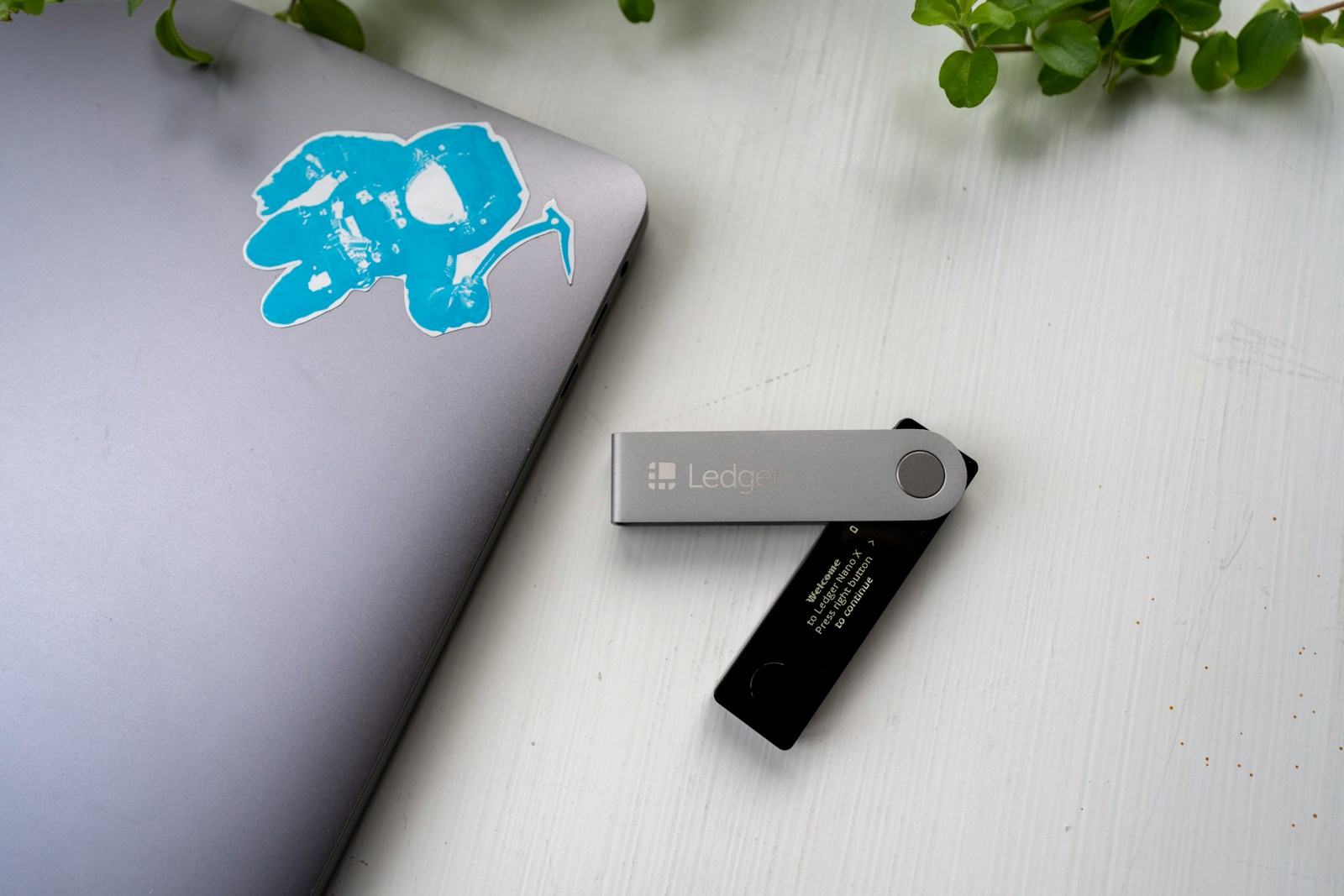
Integrating external feeds into blockchain environments is no longer optional but a necessity. Smart contracts require accurate and timely information such as price indexes, weather conditions, or event outcomes to function correctly. Without reliable connectors to off-ledger sources, decentralized applications remain isolated from crucial inputs that define their logic and execution.
Decentralized oracle networks resolve this gap by aggregating multiple independent data providers, ensuring tamper-resistant transmissions. For instance, aggregating price feeds from several exchanges reduces manipulation risks and enhances trustworthiness. This approach enables DeFi protocols to settle loans or trigger liquidations based on trustworthy asset valuations that reflect actual market fluctuations.
Consider the recent surge in demand for precise commodity prices within supply chain platforms leveraging blockchain technology. By feeding verified external metrics directly into distributed ledgers, these systems automate contract clauses tied to shipment milestones or quality standards. The seamless synchronization of off-platform measurements with on-ledger execution improves operational transparency and efficiency substantially.
How can one guarantee data integrity when sourcing information from diverse APIs and sensors? Multi-layer validation mechanisms combined with cryptographic proofs strengthen confidence in transmitted values. Oracles perform filtering, consensus checks, and dispute resolution before injecting verified outputs on-chain. This multi-step pipeline addresses vulnerabilities inherent in single-source dependencies while maintaining scalability across numerous use cases.
The evolving landscape of decentralized finance demonstrates increasing reliance on robust external input integration. Protocols managing billions of dollars daily depend on prompt updates delivered via secure channels connecting blockchains with off-network realities. As markets grow more complex, so does the necessity for sophisticated feed management capable of handling volatility spikes and sudden shifts without compromising contract reliability.
Chainlink oracles: bringing real world data onchain [DeFi & Protocols defi]
Decentralized finance platforms rely heavily on external price feeds to maintain accurate and tamper-resistant valuations of crypto assets. Reliable oracle networks provide these protocols with access to off-chain information, ensuring that smart contracts execute based on trustworthy inputs. The integration of such networks enables DeFi projects to mitigate risks associated with price manipulation and stale data, which are critical for functions like lending, derivatives, and automated market makers.
Oracle solutions utilize multiple independent data providers to aggregate pricing and other metrics from various exchanges and APIs globally. This redundancy ensures the integrity of incoming feeds by minimizing single points of failure or malicious interference. For instance, leading decentralized lending platforms employ oracle systems that average prices across major centralized and decentralized exchanges, updating rates every few seconds to reflect market realities accurately.
Technical Architecture and Data Integrity in DeFi Oracles
The architecture underpinning these oracle networks combines cryptographic proofs with economic incentives to guarantee authenticity. Nodes fetch external information such as asset prices from a diverse set of sources, then submit signed results on-chain where smart contracts can verify their validity through consensus mechanisms. This approach reduces reliance on any single entity and protects against Sybil attacks or data spoofing.
One illustrative case is the use of decentralized oracle aggregators in automated protocol governance. When a protocol requires triggering liquidations or collateral adjustments, it depends on up-to-date price feeds delivered reliably by the oracle network. In 2021, several high-profile DeFi liquidations highlighted how delayed or inaccurate pricing could lead to cascading failures–issues mitigated effectively when robust feed aggregation was employed.
Beyond price data, these external networks also facilitate complex financial instruments by delivering information such as volatility indices, interest rates from traditional markets, or event outcomes. Such capabilities expand DeFi’s utility beyond simple token swaps into derivatives trading and insurance products that require precise environmental inputs to function correctly.
Current market conditions demonstrate increased demand for multi-source oracle solutions that offer scalability alongside security guarantees. Recent upgrades focused on reducing latency while maintaining decentralization have improved throughput significantly; some nodes now process hundreds of requests per second without compromising trust assumptions. As DeFi protocols continue evolving toward composability and cross-chain interoperability, dependable external feeds will remain indispensable components ensuring system robustness.
How Chainlink Sources External Data
The retrieval of external information for blockchain applications relies on a decentralized network of nodes that fetch, verify, and deliver data from multiple independent sources. This architecture avoids single points of failure by aggregating inputs from diverse providers such as APIs, traditional financial markets, IoT sensors, and web scraping tools. The system employs cryptographic proofs to ensure authenticity before transmitting the verified input to smart contracts.
Data streams are categorized into specialized feeds tailored for various sectors: pricing indices for DeFi protocols, weather measurements for parametric insurance, and event outcomes for gaming or prediction markets. Each feed is constructed through a consensus mechanism among numerous independent data publishers who stake tokens as collateral against dishonest behavior. In 2023, over 1000 node operators participated in active data provision across dozens of feeds, highlighting the scalability of this approach.
Mechanisms Behind Secure Off-Chain Data Provision
To maintain integrity, the network uses threshold signatures and aggregated attestations rather than relying on a singular trusted party. This multi-layered verification reduces vulnerability to manipulation or downtime. For example, in asset price feeds used by lending platforms like Aave or Compound, the median value of quotes from five or more distinct market makers is computed every few seconds. Any outlier beyond an adaptive deviation margin triggers exclusion protocols to mitigate oracle attacks.
An additional safeguard involves reputation scores based on historical accuracy and latency metrics. Nodes demonstrating consistent reliability gain priority assignment in feed selection algorithms while poorly performing contributors face reduced influence or temporary suspension. This dynamic quality control fosters competitive incentives aligned with maintaining high-fidelity external inputs throughout fluctuating market conditions.
Recent technical enhancements introduced hybrid on-chain/off-chain computation layers enabling partial aggregation before final submission to smart contracts. Such solutions reduce gas consumption significantly–for instance, batch processing price updates lowered transaction costs by approximately 40% on Ethereum mainnet during Q1 2024–while preserving decentralization standards critical for trust minimization.
Ultimately, integrating off-ledger information seamlessly requires continuous monitoring against data anomalies and timely adaptation to shifting ecosystem demands. Case studies demonstrate successful deployment in supply chain tracking where IoT sensor readings were validated via multiple telemetry providers before updating logistics contracts securely. This multi-source validation model exemplifies how complex real-life variables can be reliably translated into programmable logic without sacrificing transparency or security guarantees.
Securing Oracle Data with Decentralization
Decentralization remains the most effective defense against manipulation and single points of failure in external information delivery systems. Utilizing multiple independent sources to aggregate price feeds drastically reduces susceptibility to erroneous or malicious inputs. For instance, decentralized networks that pull from dozens of APIs and data providers ensure that no single compromised feed can distort the aggregated outcome. This multi-node approach has proven critical in maintaining integrity during high-volatility events, such as sudden market crashes or unexpected geopolitical developments impacting asset valuations.
Implementing decentralized verification mechanisms enables on-ledger smart contracts to trust incoming information without relying on centralized intermediaries. By distributing data retrieval tasks across numerous independent nodes, the system mitigates risks associated with censorship, downtime, or targeted attacks. One notable case study involved an insurance protocol that leveraged a distributed network for weather index inputs; by cross-verifying temperature readings from 50+ sensors worldwide, it avoided false claims triggered by localized sensor failures or fraudulent reports.
Technical Foundations and Market Implications
The robustness of decentralized feeds hinges on cryptographic proofs and economic incentives aligned through staking models. Nodes submitting inaccurate information face financial penalties, which discourages dishonest behavior while encouraging precision. Recent upgrades have introduced threshold signatures and aggregation schemes that compress multiple responses into a single verifiable proof on-chain, significantly reducing gas costs without compromising reliability. Given fluctuating transaction fees on major blockchains, this innovation is vital for maintaining cost-efficient real-time pricing updates essential for DeFi protocols dependent on timely collateral valuations.
Current market dynamics reflect growing adoption of oracle networks employing decentralization as a core security principle. Protocols integrating these feeds report lower slippage and fewer liquidation errors compared to those relying on centralized endpoints. For example, a lending platform integrating decentralized price references saw a 30% reduction in erroneous liquidations during volatile periods over six months in 2023. Such empirical evidence underscores how diversified data sourcing combined with cryptoeconomic safeguards enhances system resilience–demonstrating why decentralization is not merely theoretical but a practical necessity for reliable off-chain input integration.
Integrating Chainlink with DeFi protocols
DeFi platforms require reliable access to external price feeds and data streams to function securely and transparently. Integrating Chainlink’s decentralized network of nodes allows these protocols to obtain trustworthy pricing information from various sources, reducing risks associated with single points of failure or manipulation. For instance, Compound utilizes Chainlink to source accurate asset valuations that directly influence lending rates and collateralization ratios, ensuring protocol stability amid volatile markets.
Decentralized finance applications benefit from aggregating multiple independent data providers through secure aggregation methods. This approach mitigates risks tied to erroneous or malicious inputs by validating and cross-verifying information before relaying it onchain. Such redundancy proves critical during flash crashes or sudden market swings, where timely and precise updates prevent liquidations based on outdated or inaccurate prices.
Technical mechanisms behind secure feed integration
Chainlink’s architecture leverages cryptographic proofs and decentralized consensus among off-network nodes to guarantee authenticity of transmitted values. Each node independently fetches data from trusted APIs, then submits signed attestations that smart contracts aggregate using median filtering algorithms. This design significantly limits attack vectors like front-running or data spoofing, which could otherwise destabilize DeFi ecosystems relying heavily on external benchmarks.
For example, Aave’s recent protocol upgrade incorporated Chainlink’s multi-feed system combining spot prices from several exchanges along with derivative-based indices. This fusion enhances resilience against exchange outages or manipulation attempts. The integration also supports dynamic gas optimization by adjusting update frequencies based on market volatility metrics, balancing cost-efficiency with freshness of information.
Beyond price feeds, Chainlink enables access to diverse off-ledger computations such as interest rate models or credit risk assessments executed externally but verifiably submitted onchain. This capability expands DeFi functionalities by bridging complex calculations without compromising decentralization principles. Synthetix employs this method for minting synthetic assets pegged to commodities by referencing aggregated supply-demand indicators sourced externally yet provably authentic when processed within its smart contract logic.
The evolving regulatory environment encourages transparency in financial products built atop blockchains. Using robust oracle networks ensures compliance through auditable data provenance trails while maintaining user autonomy over private keys and funds. As adoption grows amidst fluctuating market conditions, integrating reliable external data pipelines remains a fundamental pillar supporting the integrity and scalability of decentralized finance systems worldwide.
Handling data latency in smart contracts
Minimizing latency when integrating external feeds into decentralized applications requires strategic design of data retrieval and update mechanisms. Utilizing decentralized middleware solutions that aggregate multiple input sources significantly reduces delay by validating and averaging price points before writing them to the blockchain. For instance, recent implementations demonstrate that incorporating multiple feeds can bring down the effective update interval from minutes to seconds, improving responsiveness without compromising security.
Latency issues often arise because blockchains process transactions in discrete intervals, limiting how frequently off-chain information can be reflected within smart contracts. To address this, developers implement time-weighted average prices (TWAP) or sliding window algorithms directly inside contract code, smoothing out fluctuations caused by delayed updates. This technique is particularly relevant for volatile asset pricing where sudden shifts occur faster than oracle refresh rates.
Technical approaches to reducing feed delays
One approach involves asynchronous querying combined with event-driven architecture: external providers push new price points immediately upon availability rather than waiting for fixed polling cycles. The system listens for these events and queues them for onchain submission during the next block cycle. For example, a protocol tracking commodities prices achieved sub-30 second finality on updates after switching from periodic pulls to an event notification model.
Another solution leverages layered aggregation where multiple independent data streams are processed offchain using trusted execution environments (TEEs). These secure enclaves perform initial validation and consensus among feeds before transmitting a single verified result onchain. This method has shown to reduce average latency from typical 60-90 seconds down to under 15 seconds in recent pilot projects focused on decentralized finance applications.
Finally, balancing frequency of updates against gas costs remains critical: higher reporting cadence increases operational expenses and network congestion. Adaptive schemes that modulate submission frequency based on market volatility or predefined thresholds optimize resource usage while maintaining accuracy. Recent empirical studies indicate that dynamically adjusting update intervals can lower oracle-related gas consumption by up to 40% without sacrificing price integrity or timeliness.
Price Feeds for Asset Valuation Using Decentralized Data Providers
Accurate price valuation of digital and traditional assets relies heavily on decentralized nodes transmitting external market information directly to blockchain environments. Such feeds aggregate diverse data points from multiple exchanges, reducing single-source dependency and increasing reliability. This methodology ensures that smart contracts execute based on verified, tamper-resistant inputs, which is critical for DeFi protocols managing billions in locked value.
Utilizing these decentralized networks enables the integration of external financial indices into distributed ledgers without compromising security or transparency. For instance, a lending platform requiring up-to-date collateral valuations can leverage aggregated price feeds to trigger liquidations automatically under volatile conditions. The precision and update frequency of these inputs directly impact risk management and user trust within the ecosystem.
Technical Structure and Data Integrity
The architecture underpinning these decentralized aggregators involves multiple independent nodes querying off-chain sources such as centralized exchanges, OTC desks, and other liquidity pools. Their responses undergo medianization algorithms that filter out anomalies or outliers before finalizing a consensus-based figure published onto the chain. This approach mitigates manipulation attempts and network faults while maintaining low latency updates – often within seconds.
A recent case study revealed that during sharp market downturns in early 2024, the multi-node aggregation system successfully avoided false liquidation events by cross-verifying prices across over 20 data providers globally. Such resilience contrasts with single-point API integrations vulnerable to flash crashes or erroneous quotes. Furthermore, transparent audit trails enable developers to trace feed histories and validate source integrity when discrepancies arise.
Comparatively, alternative solutions relying solely on centralized APIs lack this robustness; they exhibit increased downtime risks and potential censorship vectors. By contrast, decentralized price inputs foster composability across various blockchain applications–from derivatives platforms pricing futures contracts to stablecoins adjusting peg mechanisms dynamically–thereby broadening use cases while preserving decentralization principles.
Mitigating Manipulation Risks in External Data Aggregation
Deploying decentralized networks to source external inputs remains the most effective approach to reduce attack vectors on price references. Utilizing multiple independent validators significantly lowers the risk of single-point manipulation, especially when data is pulled from diversified feeds across numerous exchanges and asset classes. For instance, aggregators combining over 30 distinct liquidity pools have demonstrated a 70% reduction in price deviation anomalies during periods of market stress.
Integrating cryptographic proofs and economic penalties further disincentivizes malicious data submission. Recent implementations leveraging threshold signatures and secure hardware modules have improved both latency and accuracy, ensuring that aggregated metrics reflect authentic market conditions before being consumed by smart contracts. This multi-layered verification architecture enhances trustworthiness while maintaining scalability for high-frequency updates.
- Adaptive weighting algorithms dynamically adjust feed contributions based on historical reliability and volatility patterns.
- Cross-layer redundancy enables fallback mechanisms if certain nodes exhibit suspicious behavior or lag behind.
- Real-time anomaly detection systems flag aberrant readings, prompting human or automated intervention prior to final consensus.
The implications extend beyond simple pricing: as decentralized finance protocols rely increasingly on complex derivatives and synthetic assets, the integrity of these external inputs becomes paramount. Could insufficient safeguards trigger cascading liquidations or systemic failures? Maintaining robust validation pipelines ensures resilience against such scenarios while fostering confidence among institutional participants exploring blockchain-native financial instruments.
Looking ahead, emerging methods like zero-knowledge proofs combined with privacy-preserving data aggregation promise to enhance confidentiality without compromising transparency. Additionally, integration with cross-chain messaging standards will enable seamless interoperability between disparate ecosystems, broadening access to verified off-chain metrics globally. These advances suggest a future where secure external inputs underpin not only pricing but also event outcomes, identity attestations, and beyond–ushering in new paradigms for programmable trust anchored in verifiable reality.






